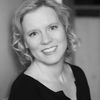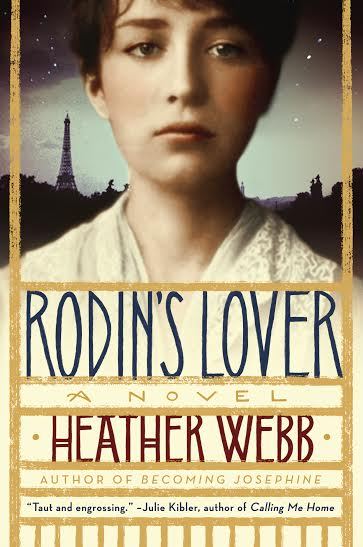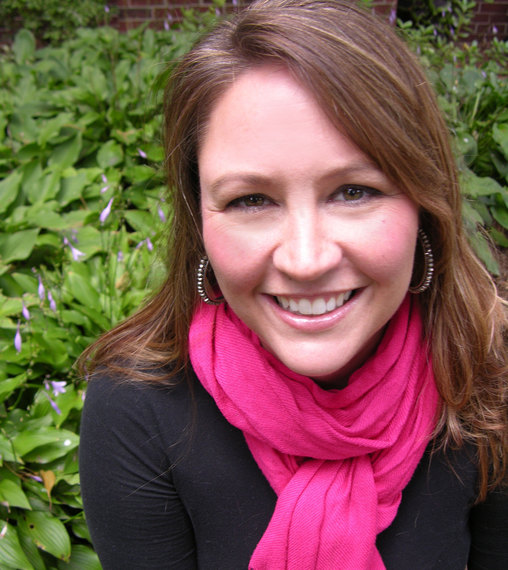Heather Webb's first novel gave voice to Josephine Bonaparte in Becoming Josephine, with the backdrop of the tumultuous French Revolution. Her latest release, Rodin's Lover, explores the lines between passion and obsession through the lens of Camille Claudel, a sculptor and muse to Auguste Rodin. Kirkus Book Reviews called Becoming Josephine, "Exceptionally concise and colorful," and the New York Journal of Books said, "Webb holds up a light into the inner recesses of a fascinating and contradictory woman." Her newly released Rodin's Lover, has appeared in Cosmopolitan, Reuters News, France Magazine, and received a starred review from RT Book Reviews. Ms. Webb and I talked about what it was like to cross the line between history and fiction--especially when it comes to giving voice to the women under-represented in traditional non-fiction narratives.
Tell me about Rodin's Lover. Who was she? How did you find her? What made you like her?
Rodin's lover was Camille Claudel. I first fell in love with Camille while in my French film class in college. The film, simply called Camille Claudel, was multiple award-winning in Europe and the U.S. with stars Isabelle Adjani and Gérard Depardieu playing the roles of Camille and Rodin. Their tragic love story gripped me and I swooned at the beauty they created both together and separately. After the film, I became rather obsessed with sculpture in general. Many years later, I had not forgotten Camille, and knew I wanted to delve more into her life. It has been an incredible experience spending time exploring her brilliant mind, and ultimately sharing her story.
You clearly love the what-if side of history; how did you become fascinated by historical fiction? What started you on this path?
What's not to love about history? I think it gets a bad rap from our grade school and high school days where many teachers force-fed us timelines and names to memorize, as opposed to teaching us to explore movements and larger concepts--never mind all of those juicy stories. This is what history, and historical fiction, really is: juicy stories. I blame my initial love of history on my dad, a retired military colonel, lover of history, museums, and old movies, and geography nut. When I decided to resign from high school teaching to raise my children, reading about historical figures was sort of a natural extension of something I always loved. This is when the writing bug gripped me by the throat. All of those stories swirled around in my head.
In terms of exploring the "other side of the story," as a former teacher, I've always made it a point to look at "truths" from the panoramic view--it gives us a more complete picture of what a situation, event, or person must have been like. Even today, you can put three witnesses on a stand who give testimonies that are vastly different from each other--agenda, life experience, and emotional baggage all weigh in. We can't separate ourselves from any of these things, nor should we. So yes, with the characters I choose to portray, I conduct research and draw my own conclusions.
How much research do you do for your books? Where do you research? Do you have any exciting stories about things you have found? Any aha moments?
For my first novel, I spent eight months researching before I began writing, and then continued to research as I went along. For Rodin's Lover, I researched about four months and then dove into the writing, continuing to look into topics in dribs and drabs as needed. I think part of why it went so much faster with my second novel is that I have a better understanding of both my research and writing processes. I'm learning what works for me in terms of a system and also when "enough is enough." Historical writers easily fall down the rabbit hole of research if we aren't careful. At the end of the day, we adore learning, and one thing can lead to another. This is why developing a system is really important.
For much of my research, I spend time first at the library and then online through Google Books and Maps, I also buy a boatload of biographies and textbooks, studies of the particular era including fashion, foods, arts and music, and political movements. I also like to venture out and try new skills, like for Rodin's Lover, I spent a little time in a sculpture class. Finally, I try to visit a location in person as often as possible. There's nothing quite like feeling the heartbeat of a location and immersing oneself in the visceral sensations that are unique to each place.
Aha moments...they happen all the time! They come when you least expect it. I can be reading something completely unrelated to my subjects and be struck by the all-enchanting Muse. It's mysterious and somewhat magical how the brain works.
We recently discussed an article that disparaged historical fiction. What is your reaction to that? What spaces do non-fiction and historical fiction share? Where do they differ? What roles do you see for both?
I found this article to be off-base. For one, nonfiction and historical fiction are two separate markets and fill different needs for readers. In other words, one genre existing does not take away from the other. Sure, there will be some crossover, but her insistence that fictional biographies will replace biography is absurd. It's fairly likely fiction readers wouldn't have chosen a biography over women's fiction anyway. There will always be a need for nonfiction biographies for academe, novelists, and other researchers--even if the general fiction reader should find them dull.
Also, I found the author repeatedly focusing on the sexual nature of historical novels. The examples she gave, however, aren't overtly sexual narratives, which was confusing. It appears as if she is wanting to lump all fictional biographies into the bodice ripper category--a tired cliché--which simply isn't the case. As for my own opinion, I, for one, enjoy looking into the emotional and sexual natures of the characters about which I'm reading or writing. It helps give me a broader understanding of their psyches.
How much history is too much? When should historical fiction stay true to what was "real" and when should it fill in the lines? This is a classic debate among readers and writers of historicals that will never be answered. It'll never be answered because there are as many opinions as there are people in the world. I do my best to be true to the documented views of my characters and to relay the historical details as accurately as possible. That being said, I find that the most fascinating and exciting elements of writing these books is the actual fiction--the pieces we create to fill in the blanks; the thoughts, emotions, and words that were uttered once so many years ago and forgotten. So while being true to historical documentation is important, I'm a firm believer in focusing on the story itself--that which draws us in, excites us, inspires us, and changes our lives.
What process do you go through to make these historical figures "real?" How do you give them voice?
For Josephine Bonaparte, so much was documented about her life, both from historians and from her contemporaries, that finding information about her wasn't trying as it was for Camille Claudel. Still, I heard Josephine's voice in my head from the first pages of the first biography I read about her. In fact, before I knew I would even write a book, I had a dream about her. I went to the library the very next day, checked out the only two biographies they had about her, and began to read. She spoke to me every single day until the book was finished. Josephine feels like a friend and lives with me still. Making her "real" in terms of her voice was almost effortless--she kept telling me what to say. Crafting other parts of the book weren't so easy! Far from it, in fact.
As for Camille Claudel, it took me about two-thirds of the way through the first draft to really get a handle on who she was, the things she would say, and how she would see the world around her. She was tougher, her more voice more delicate to capture in some ways and more of a bull in a china shop in others. Josephine and Camille couldn't be more different from each other and I enjoyed the challenge of capturing them on the page. My research helped with discerning Camille's character, but also learning about schizophrenia, the art world, and just being a strong female myself, really helped me dive into her head.
As you are working in fiction, when do you take liberties with the history?
I take liberties on occasion, though not if I can help it. Usually when I push and pull things a little, I make a note of it in the author's note at the end of the book or on my website. These tweaks happen when I feel the fact itself adds little to the story. For example, in Becoming Josephine, Josephine sails to France from Martinique without her Papa. In real life, he accompanied her, but he was ill and bed-ridden for two full years before returning to Martinique, thereby adding little to the evolution of Josephine's new identity as a French woman. I chose to leave him at home.
What other women from history have caught your eye? Who might you like to write about next?
There are so many inspiring, unsung heroines out there! My next character, however, is fictional but very recognizable. I can't reveal too much at the moment, but the book will be a retelling of a popular story and is shaping up to be a bit of a Gothic thriller, also set during the Belle Époque era. From there, I'm heading to twentieth century U.S.!


